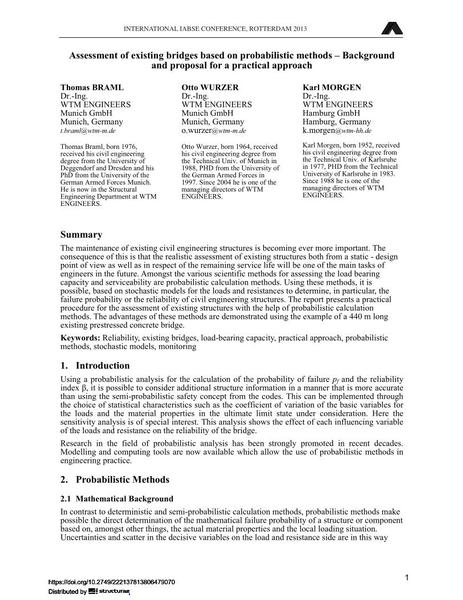Assessment of existing bridges based on probabilistic methods – Background and proposal for a practical approach

|
|
|||||||||||
Détails bibliographiques
| Auteur(s): |
Thomas Braml
Otto Wurzer Karl Morgen |
||||
|---|---|---|---|---|---|
| Médium: | papier de conférence | ||||
| Langue(s): | anglais | ||||
| Conférence: | IABSE Conference: Assessment, Upgrading and Refurbishment of Infrastructures, Rotterdam, The Netherlands, 6-8 May 2013 | ||||
| Publié dans: | IABSE Conference, Rotterdam, May 2013 | ||||
|
|||||
| Page(s): | 300-301 | ||||
| Nombre total de pages (du PDF): | 8 | ||||
| Année: | 2013 | ||||
| DOI: | 10.2749/222137813806479070 | ||||
| Abstrait: |
The maintenance of existing civil engineering structures is becoming ever more important. The consequence of this is that the realistic assessment of existing structures both from a static - design point of view as well as in respect of the remaining service life will be one of the main tasks of engineers in the future. Amongst the various scientific methods for assessing the load bearing capacity and serviceability are probabilistic calculation methods. Using these methods, it is possible, based on stochastic models for the loads and resistances to determine, in particular, the failure probability or the reliability of civil engineering structures. The report presents a practical procedure for the assessment of existing structures with the help of probabilistic calculation methods. The advantages of these methods are demonstrated using the example of a 440 m long existing prestressed concrete bridge. |
||||
